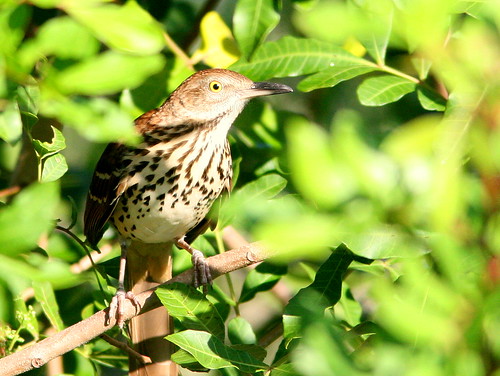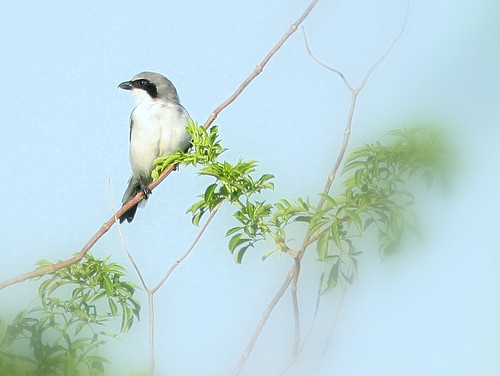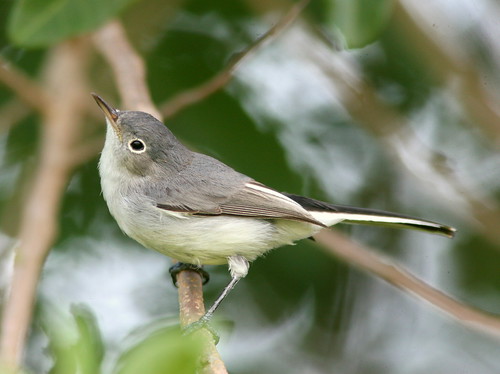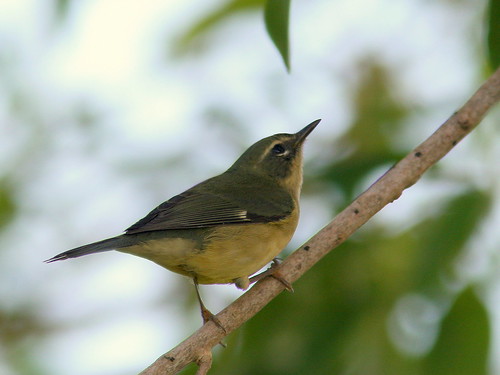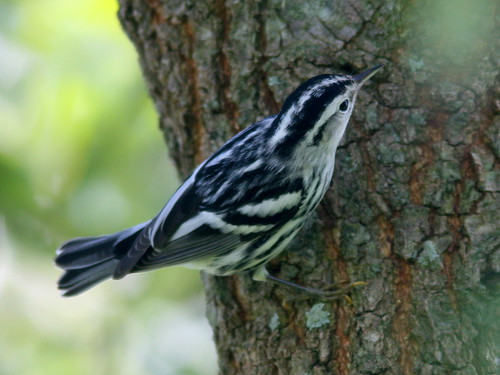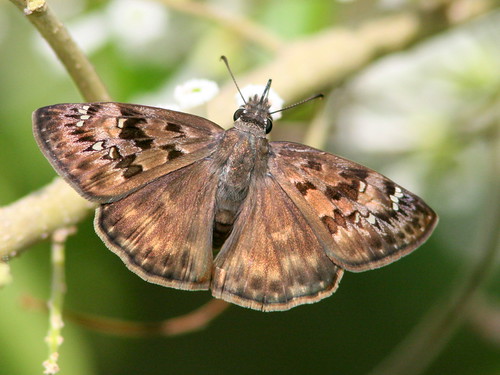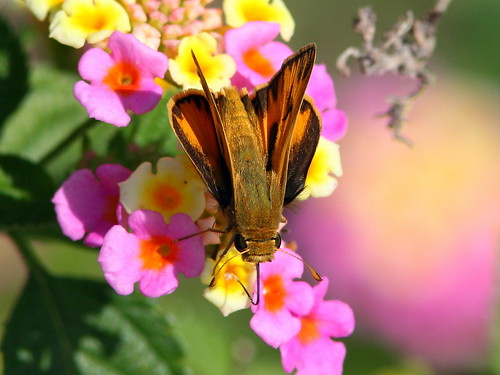Posted by: Ken @ 4:01 pm
Prairie Warbler in flight:
Hoping to get another and better look at the three Bobcats, I walked south past the spot in the trail where I had last seen them. On a previous occasion, the scolding of birds gave away the location of a Bobcat. This time, there was only silence.
As it turned out, my foray along the overgrown path atop the 196th Avenue levee was not a bad idea. Suddenly, several Prairie Warblers put in an appearance. The above was a lucky shot, as I clicked the shutter just as the bird left its perch.
Here is a nicely marked male Prairie Warbler:
This one appears to be an adult female. Prairie Warblers will remain here all winter:
I did not see the sought-after Ovenbird, but one of its cousins appeared unexpectedly as I was photographing two Brown Thrashers that appeared along the path.
I presumed this to be a Louisiana Waterthrush, as i thought it had a very long and conspicuous white line over its eyes, relatively unstreaked throat, and bright bubble-gum colored legs, helping to distinguish it from the very similar Northern Waterthrush. The latter is a more common migrant in South Florida, and has bold streaks against a white breast. Expert opinion leans toward it being a Northern Waterthrush, based upon buffy breast and the fact that the throat has some streaks: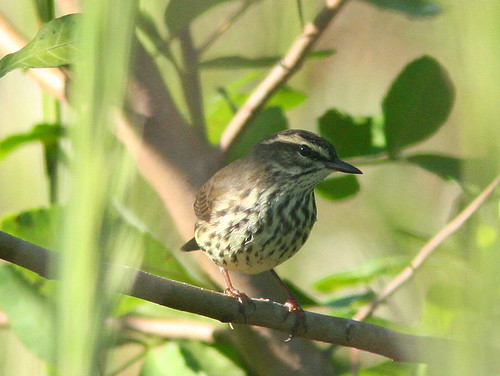
The waterthrush stayed well-hidden in the lower branches, and I was lucky to capture a few images as it briefly stepped out into the sun. In Spring, their songs readily distinguish the two waterthrushes, but this one was silent:
The Brown Thrasher was even more elusive, only providing me with one chance. The harsh morning light and my too-high ISO setting resulted in a badly overexposed image (but I love that eye):
Something odd happened as I was looking across the canal. Two birds that looked to be joined together flew slowly and laboriously across the water, only about 10 feet above the surface. They seed to be struggling just to stay airborne, and sure enough, they slowly descended. When only about 3 feet over the water, one of the birds fell into the water and the other quickly flew away.
The bird in the water was a bit smaller. It splashed for one or two seconds, then lifted off and flew to the shore in the opposite direction. I am quite certain that the larger bird was a Loggerhead Shrike. The smaller was about the size of a larger warbler or vireo (I would say sparrow-sized, but we don’t have any sparrows here this time of year), but I could not confirm the identity of either. Shrikes are known to prey on birds that are almost the same size, so this was probably not unusual. The intended victim was lucky to survive the attack, as shrikes can use their sharp bill to quickly sever the spine of a captured bird.
This Loggerhead Shrike was in the general vicinity of the attacker, and it stood out against the blue sky:
I saw a couple more birds that wore shades of gray. This Northern Mockingbird posed nicely: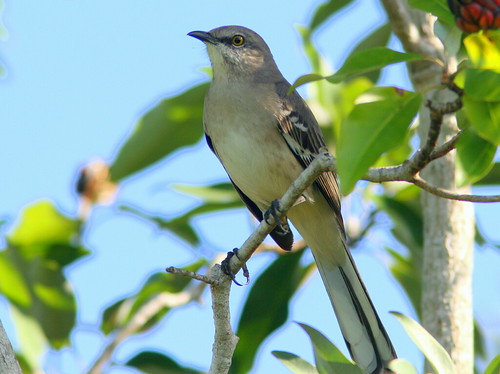
A Blue-gray Gnatcatcher was more acrobatic (no, the photo is not inverted):
Another gnatcatcher assumed a more conventional posture:
A small flock of warblers joined the gnatcatcher, including this male Black-throated Blue Warbler:
The female Black-throated Blue Warbler is a more subtle beauty:
Continuing the monochromatic theme, several Black-and-white Warblers gleaned the tree trunks:
One Black-and-white Warbler imitated a nuthatch’s pose:

On the way back, I stopped to study the butterflies. I’m only just beginning to learn about them. At my age it is getting hard for me to remember the names of new animals and plants, and I often have trouble matching them with their pictures in Glassberg’s “Butterflies Through Binoculars.” I welcome corrections from knowledgeable readers.
A Florida Fiddlewood (Citharexylum spinosum), a native verbena, was in bloom with tiny tubular flowers that attracted this Horace’s Duskywing:
The Monk Skipper is similar but much more plainly marked. It is a Cuban species found in the southern tip of Florida, and exotic ornamental palms serve as host plants:
The verbena is host for the White Peacock, a tropical butterfly that ranges into the Florida peninsula, rarely straying up the east coast as far as the Middle Atlantic states. It is one of my favorites:
This Fiery Skipper feasts on the nectar of multicolored Lantana flowers, another Verbena native to Florida, but its larvae eat Bermuda grass:
















